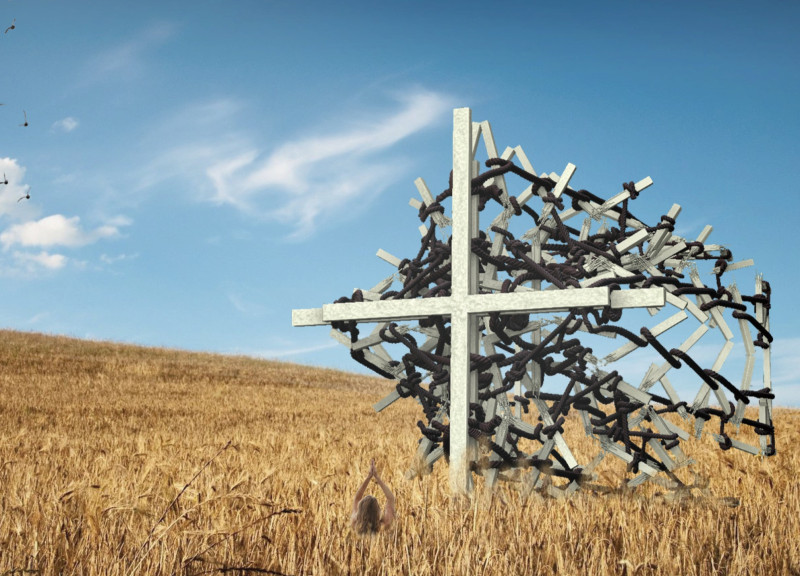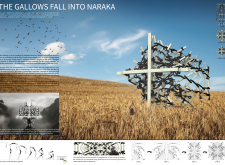5 key facts about this project
The project titled *The Gallows Fall into Naraka* explores the themes of historical and contemporary witch hunts through its design. It is rooted in the concept of naraka, a Buddhist perspective on hell, where sinners are bound and face disintegration. The gallows serve as a potent symbol of societal rejection and the collective suffering stemming from prejudice and fear. This exploration encourages reflection on the emotional aspects of these historical narratives and their relevance today.
Conceptual Framework
At the heart of the design, a series of panels illustrate the gradual disintegration of gallows. Each panel represents a different stage in this breakdown, emphasizing both loss and the lasting impact of historical injustices. This visual narrative draws attention to the emotional weight of past events and invites consideration of their relevance in modern society.
Imagery and Visual Impact
The visual elements used in this project are direct and confrontational, engaging observers with the themes presented. The gallows act as metaphors for persecution, revealing the roles of jealousy, fear, and the rejection of those deemed different. Such imagery compels viewers to confront the ongoing realities of violence and discrimination, issues that resonate across cultures and time periods.
Cultural and Philosophical Dimensions
The design is further enriched by references to Buddhist thought, providing a deeper context for the historical narratives it addresses. This inclusion prompts reflection on moral and ethical responsibilities in the face of societal injustices. It creates space for engagement with complex themes while encouraging a critical view of past and present human actions.
The detailed depiction of the gallows and their state of decay enhances the connection between the viewer and the historical context. By drawing attention to the fragile nature of human constructs, the design reinforces its message about the enduring consequences of societal behavior.



















































